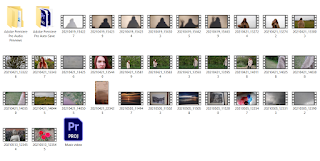The development of editing technology
The development of editing technologies
The use of editing in film has always been important however early films had little to no way of editing the video they produced until Rober W Paul and his camera which was able to reverse crank and therefore repeat the same images twice over. The first person to properly use this technique to it's fullest however was Georges Méliès who went on to become quite famous from his ability to create and edit his films. Early film producers also found the ability cut and stitch the reals in any order they want, this allowed them to create cuts similar to the ones in modern cinema.
Editing further progressed in 1924 with the production of the moviola which allowed film directors to edit there films after filming. This invention gave a lot more freedom to the film director as they now had control over there creations. The idea was quickly taken up by the larger movie companies inside Hollywood and allowed for a massive leap in technology for film production. There was a large increase in sales for the moviola around WW2 as it allowed edited news products to travel freely and provide the allies with information about the war.
Flatbed edit suites were big work benches where film editors would load up the reals and could edit them by using the digital monitor display to cycle through the frames. created in Germany in the 1930's the system allowed for precise editing however it is quite complicated. A flatbed would be used to allow the editor to sync up the audio and the images to create a finished product.
Linear and Non-linear editing became a major thing during the 1990's, as computers were becoming more widespread the means of editing films came with them. Linear was very commonly found on TV but further through the 1990's the NLE (non-linear editing) computers emerged which allowed this method of editing to spread fairly freely throughout the latter years. This growth in computer editing killed the mainstream use of the flatbed edit suites.
Online and offline editing are forms of editing involving the storage of data. Offline is about reducing the quality of the film so that it fits on storage drives and can be exported with correct timestamps. Having the correct time stamps in editing means that once it is on the equipment it can be pieced together quickly. Online editing is using expensive equipment to create a video by keeping the high quality video shot from the camera and piecing it together.
Modern editing platforms (final cut, premiere pro) are both editing applications that are used to create the finished version of a film, for longer and more visually demanding films both require a more expensive computer to keep it running. They are the most popular forms of editing today due to there ease of access and use.
Film and film types have changed drastically through the years originally starting with different types of film to record onto ranging anywhere from 35mm to 4x5 large. These films were used by much older cranking systems of film all the way to cameras from 1960's and above. Today however the way of filming has changed and is mostly all digital with some directors still using film. Modern cameras will record in aspect ratios such as 16:9 or IMAX. IMAX is currently the largest and highest resolution version of modern filming which can reach 6 or 8k in resolution.

Comments
Post a Comment